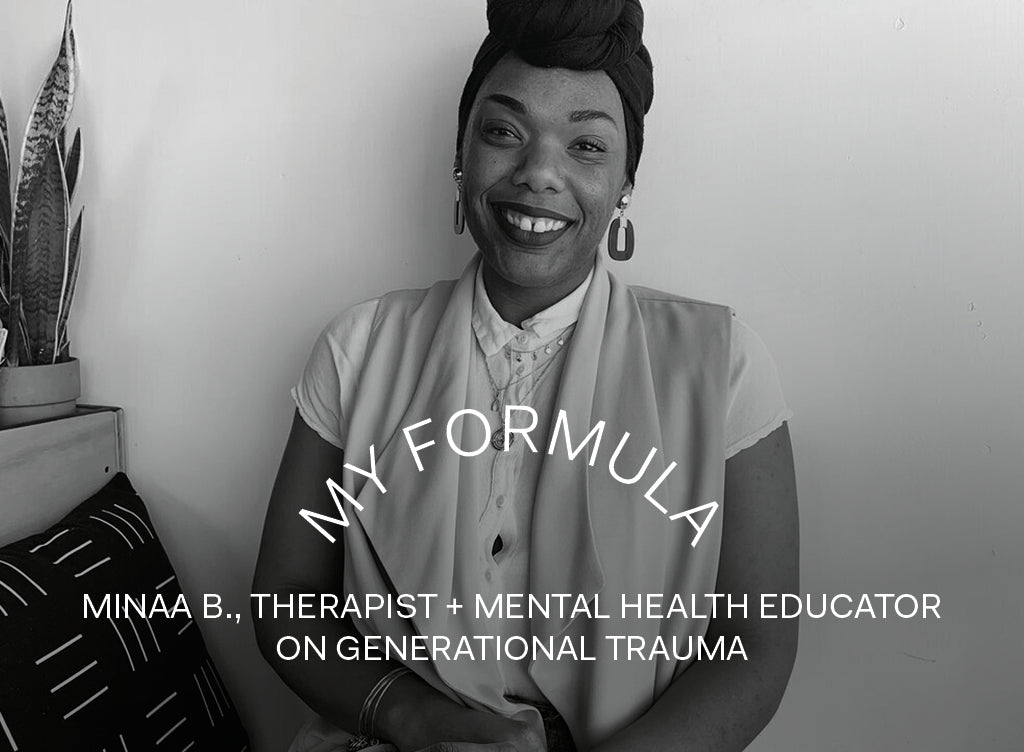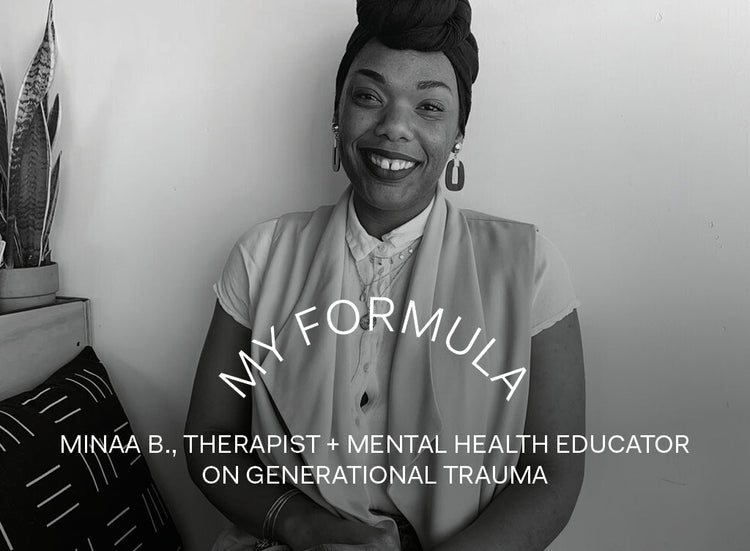Generational trauma: its roots and its impact
Speaker, writer, therapist and wellness consultant Minaa B. explains how mental health can be inherited and what can be done to break the chain.


Minaa B., is a NYC-based licensed therapist, author, speaker, writer, and wellness consultant who received her MSW from New York University. With over eight years of clinical experience, Minaa is an expert on setting boundaries and treating depression, anxiety, and childhood and racial trauma. Through workshops, speaking engagements and her writings (including her Instagram account of uplifting mantras and insightful reflection prompts), she empowers and educates audiences on complex mental health topics and provides practical everyday solutions for self-care.
Exclusively for The Nue Co., Minaa writes on generational trauma amidst a time when it’s especially prevalent; from the repercussions of COVID-19 social distancing on children to the brutality that prompted a resurgence of the Black Lives Matter movement.
When we talk about trauma, it is often referred to individual experiences, but trauma does not present itself in one specific way, nor is it linear. Trauma is multifaceted and because of this, it can affect groups of people from different walks of life related to sex, gender, class and even race. When trauma is unresolved on an individual level however, its symptoms can manifest in the offspring of those who have been traumatized, and this is known as intergenerational trauma. This term was first coined by psychiatrist Vivian M. Rackoff back in 1966 to describe the effects of the psychological distress amongst children of Holocaust survivors.
To look at it more perplexedly, intergenerational trauma is simply the effects of unresolved trauma, whether individual or interpersonal, that gets passed down the family tree and affects the family system as a whole. However, a more pervasive form of interpersonal trauma is defined as historical trauma, that specifically affects BIPOC (Black, Indigenous, People of Color), which is the consistent act of violence and oppression that marginalized groups of people have faced for centuries and are often hard to resolve because these traumatic experiences are still present until this day.
When we take the time to understand trauma’s impact on the body, we learn that trauma manifests itself in individuals not just psychological, but emotionally, spiritually and physically, and this is because trauma affects the brain. Starting from gestation to later in life, our experiences can shape and impact brain development, especially when some of these experiences are stress-related. And how we react to life stressors can impact how we build relationships, raise children and nurture our interpersonal skills.
When we take the time to examine the American society we live in today, as well as its history, we can see the effects of not just intergenerational trauma, but historical trauma and its impact on Black people. Black people are more susceptible to facing issues like intergenerational trauma due to the interpersonal, institutional and systemic abuse, violence and racism that they have experienced dating back to slavery, up until the Jim Crow era and even now through microaggressions, anti-blackness and white supremacy.
We see all this now happening before our eyes, from the death of Ahmaud Arbery, to Breonna Taylor, to George Floyd, Elijah McClain and the countless other lives of Black folks that were stolen due to the racism and implicit biases that are embedded in America’s police force as well as the structures that claim be for the betterment of the American people.
When you are constantly exposed to violence, directly or indirectly, it is a form of trauma and it can both cause mental and emotional dysregulation.
Some of the symptoms of intergenerational trauma that can affect Black people are the unresolved emotions of the traumatic experience, untreated substance abuse disorders, the development of personality and mood disorders such as anxiety and depression, unhealthy parent-child relationships, numbing and emotional detachment, and difficulties forming interpersonal relationships. These issues, however, are not only exclusive to Black people and can manifest in other family systems as well.
The work of dismantling intergenerational trauma means someone has to take inventory of their family patterns and be courageous enough to break them. This can look like examining issues like substance abuse in the family, dissecting relationships between children and parents and its roots in trust, safety and healthy socio-emotional nurturing practices, and the acknowledgement of historical issues that are still present today and engaging in therapeutic practices to sustain one’s mental health.
Some more practical ways can include seeing a therapist who is trauma-informed, and also has knowledge of race-based and systemic issues for those who are Black.
Writing practices are therapeutic tools that help us with disorganized thinking and challenging our negative thoughts. Writing out your emotions can be healing for people who are struggling with numbing, and can help with identifying what’s plaguing the emotions you are experiencing in the first place.
Incorporate movement therapy into your daily practices to help with trauma's impact on the body, this can include daily walks or bike rides, yoga, stretching, exercising, swimming and even playing sports. These practices also help to decrease mood imbalances and emotional dysregulation.
Overall, trauma work is not only self-care, it is community care. When we heal ourselves, we heal generations, we nurture our environments and we help to dismantle systems and institutions that cause the cycles of harm in the first place. It is possible to break intergenerational trauma, but it starts within.
Further resources:
https://www.mhanational.org/bipoc-mental-health
https://www.mhanational.org/racial-trauma